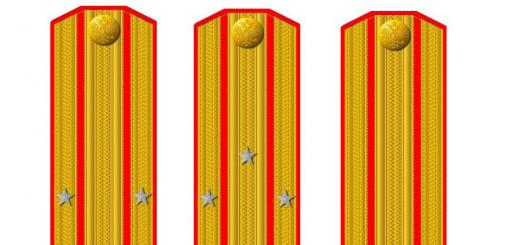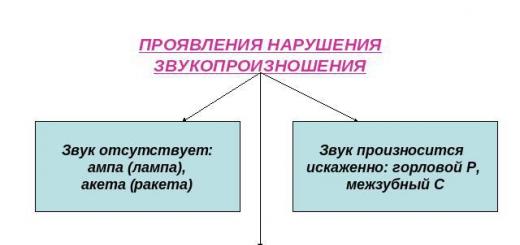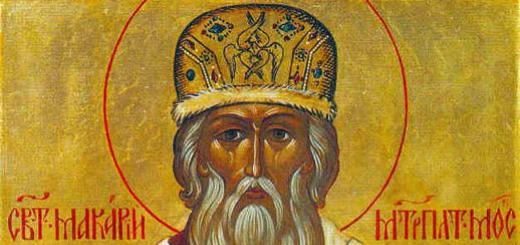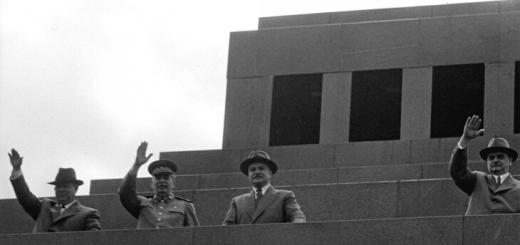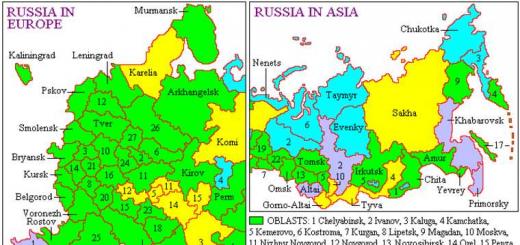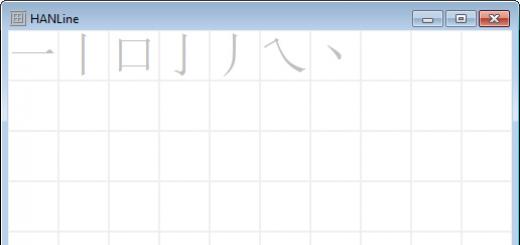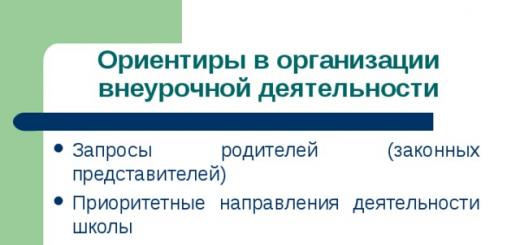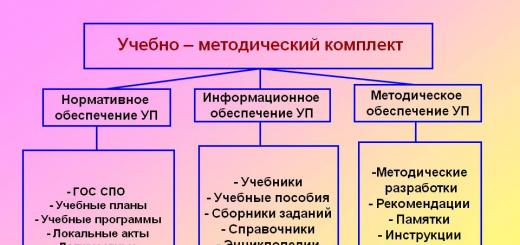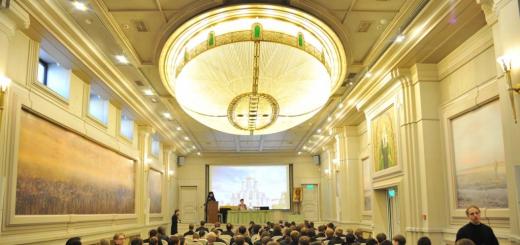Vanguard- part of the troops or fleet located in front of the main forces, the vanguard; a unit that follows in front in order to prevent a surprise attack by the enemy.
Rearguard- part of the army intended to ensure security in the rear.
Bobyl- a lonely poor peasant, usually without land.
Saddle pad- a thick cloth blanket under the saddle or, sometimes, on top of the saddle. Saddle pads can be made from cotton fabric, fur and other materials. Other names: saddle cloth, chandar, board.
Sergeant- rank and position of non-commissioned officers in the cavalry, horse artillery, Cossack troops, as well as in the gendarmerie. He is the closest assistant to the squadron (battery) commander for drill training and housekeeping.
Monogram– intertwined, usually uppercase, initial letters of the first and last name, forming a peculiar pattern.
Galloon- a thick ribbon or braid of different colors, made from cotton yarn, silk, often with gold, silver thread or tinsel, used to make insignia for uniforms.
General– the highest military rank (rank) of senior officers. The rank of general could only be conferred by the king - by written order.
Batman- a member of the highest rank to perform the role of a government servant.
Corporal- military rank, immediately following the rank of private. Assigned by the unit commander to soldiers as an incentive.
Irregular troops- troops that do not have a solid and permanent organization in terms of their recruitment and service, training, uniforms, and differ significantly from regular troops.
Border- a stripe of a different color and pattern along the edge of a fabric or product.
Buckshot- an artillery shell with ready-made lethal elements, which were used as small stones and pieces of iron, without an exploding or explosive charge.
Kirza– a leather substitute, which is a dense multi-layer fabric impregnated with a special composition to protect it from moisture.
Jacket– summer canvas clothing for military personnel.
Cornet- junior officer rank in the cavalry. Initially, cornets played the role of standard bearers.
Leggings– expansion of sleeves at the wrists of military personnel.
Sash- a belt, usually made of a wide, long piece of fabric or cord.
Culottes– men's knee-length pants.
Lampas– side colored patch along military trousers.
Livery- uniforms of a special cut, usually with embroidery and braid.
Lychka– longitudinal stripe on shoulder straps.
Lyadunka- a bag for cartridges for a pistol or carbine, which was worn over the shoulder.
Major– military military rank of senior officers.
Chief officer- every officer up to and including the captain.
Cuff- a lapel at the end of the sleeve, as well as, in general, the lower sewing part of the sleeve.
Band- a detail of a uniform headdress that directly covers the parietal part of the head.
Trousers– long men's trousers (usually white).
Cape- a cape worn over clothing.
Sling- a stripe, ribbon or belt over the shoulder, mainly in uniform.
Plume- decoration made of feathers, threads or other material of a uniform headdress, as a rule, the brim of a hat, in the form of a single-color or multi-color edging.
Colonel– military military rank (rank) of senior officers. Initially it also meant the position of regiment commander. But, since the end of the 18th century - only rank.
Harness– uniform military or casual equipment for carrying weapons.
Lieutenant and second lieutenant– military ranks of chief officers in Russia (guarantors, assistant commanders).
Ensign- military rank, rank. Warrant officers occupy an intermediate position between officers and sergeants (seniors). Basically, the parts responsible for economic needs.
Instrument metal– metal assigned to the regiment – gold or silver.
Clearance (firmware)- a graphic element on the shoulder straps of military personnel, is a straight strip approximately 0.3 cm wide. The color of the gap changes with the branch of the military.
Pump skin– very tough, thick, coarse leather of special manufacture.
Regular troops- troops of a standing army that have a regular organization, uniforms, and the procedure for recruitment, service, training and education established by law and regulations.
Recruitment set- system of recruiting the regular army and navy of Russia in the 18th-19th century. It extended not only to nobles, but also to burghers and peasants. The conscription age of recruits was 17-32 years. The term of service in 1812 was lifelong.
Grease boots- greased with tar or pork fat.
Smushka- lamb skin with curls of wool varying in size, luster and pattern.
Cloth- fabric made of wool or wool blend yarn, on the front surface of which, as a result of rolling, a felt-like covering is formed, hiding the pattern of weaving threads.
Sultan– fur or hair standing decoration on a hat.
Lanyard- braid with a tassel on the hilt of a saber, sword.
Teptyari- the name of a significant part of the non-Bashkir population who lived in the 18th - early 20th centuries. among the Bashkirs. Tatarstan included Tatars, Mishars, Udmurts, Maris, and Mordovians, who retained their language and cultural characteristics. The Teptyars were immigrants mainly from the Middle Volga region, settling on Bashkir lands.
DICTIONARY OF MILITARY TERMS AND OBSOLETE WORDS
Vanguard - the advanced part of the troops.
Outpost - an advanced post or line of outposts.
Adjutant is an officer attached to a military commander, headquarters or military unit for assignments and maintaining papers.
An aiguillette, a badge of rank, in the form of a plait woven from a gold or silver cord, was attached to the uniform, on the right shoulder so that two long loops and two braids with metal tips hung from the shoulder.
Gait is the movement of a horse in formation at any speed (walk, trot, gallop, gallop).
Embrasure - a hole in a fortress wall or in the parapet of an artillery fortification for conducting artillery or rifle fire at the enemy.
Ammunition is a set of things that make up a soldier’s equipment, except for his uniform, underwear and shoes.
The fittings are a sculptural representation of weapons from various eras and trophies.
Arsenal is a military institution for storing, repairing and assembling, accounting, issuing weapons and ammunition to troops, as well as for carrying out work on their assembly, repair and production of some parts for them.
Article - department, paragraph of the charter, military regulations, code, military laws.
An artillery company was a unit consisting of 12 guns. Used for fire support of infantry and cavalry.
An artillery park is a military formation intended to replenish ammunition.
Arshin is a measure of length equal to 71.120 cm.
The rearguard is the final part of the troops.
The assignat (assignation ruble) was first a settlement, auxiliary, and then the main monetary unit of the Russian Empire from 1769 to January 1, 1849. It circulated on par with the silver ruble. At the first request, one currency was exchanged for another at the market rate.
Attack - attack; a certain trumpet signal calling cavalrymen to attack the enemy.
Ataman is a military-administrative position in the Cossack troops.
Certificate - a document issued to military officials and confirming their qualifications, diligence, courage and good behavior.
Balagan - a hut or hut made of brushwood, reeds, straw or other things. They were built in temporary military camps, in bivouacs.
To ban is to clean the inside of a weapon or cannon.
A bannik is a wooden shaft with a cylindrical (or conical) brush mounted on it. Intended for cleaning the bore of an artillery gun before each loading. At the opposite end of the bannik shaft there was a PIN.
A bastion is a pentagonal long-term fortress or field defensive structure, erected at the corners of the fortress fence.
Battle fire - organized infantry rifle shooting - rapid, frequent aimed fire, carried out without a command for each shot.
The battalion is the main tactical unit.
A battery company is a field foot artillery unit armed with 12 heavy artillery pieces and designed to create batteries (hence the name), operate from field fortifications and conduct massive fire.
Battery - 1) temporary concentration at one firing position of various numbers of artillery pieces to solve a common problem; 2) artillery unit; 3) field fortification designed to accommodate artillery pieces.
Rapid fire - artillery or rifle fire, which was conducted at maximum speed.
Bivouac – 1) a reinforced night guard sent to guard a city or camp near the enemy; 2) the location of troops in the open air.
Order of battle is the formation of troops for battle.
A bomb is an explosive artillery shell weighing more than 16.38 kg. Bombs were fired mainly from mortars.
Bombardier - senior private artilleryman (private artilleryman 1st class), from the gun servants.
A brigade is a tactical unit consisting of several regiments or artillery companies.
The parapet is the main part of the fortification rampart, protecting those in it from observation, bullets and shells.
Trousers - outer trousers, knickers.
Bulletin - in the French army - news about daily military operations, transitions, incidents, etc.
Wagenburg is a concentrated location of military convoys, rear institutions and the military teams covering them.
Wagenmeister is the head of the convoy of a military unit, a non-combatant non-commissioned officer.
Sergeant-major is a senior non-commissioned officer in cavalry regiments.
Lead - 1) an advanced paired cavalry post (one of the posts in the chain of leads), advanced as close as possible to the enemy to observe his actions and conduct reconnaissance; 2) a security and observation post, usually consisting of two sentries, one of which was intended for transmitting messages.
Monogram - the initials of the first name, first name and patronymic or surname, first name and patronymic, woven into a single patterned composition.
Venter is a Cossack tactical technique not regulated by military regulations. Designed to lure the enemy into a pre-prepared ambush in order to strike him from the flanks and rear. The role of “bait” was played by a small detachment that imitated flight and led the enemy, carried away by the pursuit, into an ambush.
Versta is a measure of length equal to 1.0668 km.
Vershok is a measure of length equal to 44.45 mm. 16 vershoks make up ARSHIN.
The messenger gun is a weapon located at the main apartment or at the headquarters of the commander-in-chief. It gave signals to prepare the army for a march, to the beginning of the morning or evening DAWN.
Messenger - messenger.
Veteran - an elderly soldier who has been discharged or is in service, but not in service.
A platoon is a tactical unit within a company.
Winter apartments (winter apartments) - the location of troops for the winter in a populated area.
Screw gun - having threads inside the barrel (“screws” or “edges”); differs from a rifle in that it has a bayonet.
A rifle is a gun that has several grooves inside the barrel (5, 6, 7, 8 or 9). It differs from a gun in shooting accuracy, but in slowness when loading.
Vitsmundir is an everyday uniform, differing from the ceremonial uniform by having less gold or silver embroidery, and sometimes by less bright colors.
Internal guards are special military formations designed to maintain order within the state.
Military campaign (in the 19th century) – 1) a set of interrelated military actions, united by a common plan and aimed at achieving important strategic goals of the war; 2) a stage or period of war, limited by a calendar framework (year, season, etc.) and a single theater of military operations; 3) a campaign to perform a specific military-political task during the war; 4) the period of the troops’ stay on the campaign.
The leader is an official who knows geodesy, field fortification and roads in the area of troop operations, who knows how to occupy and locate camps. They are present with detachments of troops and follow in front. Sometimes they were given work teams to fix roads and bridges, and in case of danger they were given military cover.
Volunteer is a person who voluntarily entered military service.
Wolf pits are the same holes that hunters make to catch wolves, only deeper. They set up in front of field and fortifications when there was a threat of assault. They were usually located in several lines, in a checkerboard pattern.
Edging is a narrow strip of colored fabric sewn into the edge of a uniform piece or sewn into a seam.
An artillery shot is a set of elements of artillery ammunition required for one shot: a projectile, a powder charge, means of igniting the charge and auxiliary elements.
Tie - in Russia army - a scarf, ribbon or strip of fabric for tying a shirt collar.
Galun is a patterned gold, silver or tinsel braid (ribbon) for finishing a uniform, depicting insignia on the uniform.
Garrison is a part of the army located in a city, fortress or castle to protect it.
A road is a road through a swamp or flooded area, lined with logs and covered with brushwood mixed with earth and turf.
A howitzer is an artillery weapon capable of firing at both visible and invisible targets.
Guardhouse - the main guard of an association or garrison and its location in a populated area (guardroom).
The Guard is a selected, privileged part of the army, intended to protect the sovereign.
General of Artillery is a military rank for generals who held senior positions in the artillery.
General of Infantry is a military rank for generals who served in foot troops. Persons who had this rank usually commanded armies and occupied senior military and government positions.
Cavalry general is a military rank for generals who served in the cavalry. Those who had it usually commanded armies, corps, and occupied the highest military and government positions.
Adjutant General - an honorary title for generals and admirals who were in the Suite of His Imperial Majesty; assigned personally by the emperor to persons who held military general ranks and earned the personal favor of the monarch.
The Governor General is the highest government official, the head of the General Government (an administrative-territorial unit of the Russian Empire, consisting of several provinces or regions).
Generalissimo is the highest military rank, exceeding all ranks of the Table of Ranks. The person who had it led not only all the armies, but also all the troops of his state in general, and sometimes the fleet.
Field Marshal General is the highest military rank. Awarded personally by the emperor for outstanding military victories or for long-term service in senior government positions.
A general battle is the main battle when two armies fight each other with all their might. Often the outcome of such a battle decided the fate of an entire campaign, and sometimes the entire war.
Whooping is a Cossack term, which means to strike at the enemy, to unexpectedly and quickly attack him with a cry of “Gee!”, to intimidate and induce panic.
Main army - if the armed forces are divided into several armies, then the main one is called the one with the commander-in-chief or sovereign emperor.
The main apartment is a collection of persons (from the chief of the General Staff to the orderlies) who served under the emperor, commander-in-chief or other military leader who commanded a significant mass of troops.
A grenade is an explosive artillery shell - a hollow cast-iron ball weighing no more than 16.38 kg (pounds), filled with gunpowder. When fired, the gun broke into many fragments.
Grenada - an insignia in the form of a relief image of a grenade with one tongue of flame escaping from it (G. “about one fire”) or three (G. “about three lights” or three-flame).
Grenadier - a soldier of the grenadier companies of the grenadier, infantry and jäger regiments.
Hussar - soldier of hussar regiments.
Duty officer is any official or ordinary soldier assigned to perform any position in turn, and is obliged to perform it for 24 hours or another specified time, without leaving.
General on duty - elected commander-in-chief of the army, serves throughout the campaign or until the end of the war. His duties included: always being with the commander-in-chief, giving his orders to the troops and overseeing their execution, managing the office of the commander-in-chief, receiving reports from the troops and reporting them to the commander-in-chief, etc. He appointed internal and external guards, managed the ranks of the Main Apartment.
Duty - the office or board of the general on duty.
A deserter is a soldier who left his unit without permission.
Declaration is an announcement.
An orderly is a servant from the lower ranks incapable of military service, attached to an officer as a servant.
Dispatch - urgent reports sent from the army to the sovereign or from lower commanders to higher ones.
Depot - 1) a central warehouse, storage of ammunition, money, provisions or fodder left in certain places; 2) place of gathering and training of recruits; a reserve cavalry unit, where horses were trained for combat service.
Defile is a tight, narrow passage between natural or artificial obstacles.
A division is the main tactical unit, consisting of several brigades.
Deployment is the location of troops.
Disposition - a written plan for the disposition or movement of troops, a battle or battle.
Doloman - hussar uniform. A mentik was usually worn over the dolman.
Dragoons are a type of cavalry trained to fight both on horseback and on foot.
The shaft is a long rod on which the banner panel or the tip of a weapon (spikes, halberds, etc.) was attached.
Drogi is a military four-wheeled vehicle for transporting heavy loads.
A shotgun is a long, wide-barreled hunting rifle.
Shot is a cartridge shell in the form of small lead or cast iron balls. Most often used for hunting.
Drawbar - a long wooden lever inserted between the front ends of the spokes. Using a drawbar, two horses were harnessed to one cart.
Jaegers are light infantry, intended for combat mainly in loose formation.
The Unicorn is an artillery weapon that combined the combat qualities of a howitzer and a cannon, i.e. could fire all types of projectiles both from cover and at direct fire.
A corporal is an ordinary soldier of the senior rank, one of the most honored.
The journal is a daily note. During military operations, journals were always kept in which all the actions of each day were recorded, news from individual corps and detachments, as well as orders given on them.
Zavodny – supernumerary, supernumerary (spare).
A volley is a type of firearms shooting in which shots from several artillery pieces or guns were fired simultaneously by a single command.
Deputy O to rifle - a device that ensured the ignition of a combat charge in the barrel of a gun.
An ignition tube is a device for igniting the internal charge of a grenade or bomb, a prototype of a fuse.
Dawn - morning and evening - a military ceremonial and military signal, performed at a set time (in the morning - for awakening, in the evening - for “lights out”) on a drum, bugle (trumpet) or orchestra.
Charge - a certain amount of gunpowder that, upon rapid combustion, ensures the ejection of a projectile (bullet, cannonball, buckshot, bomb or grenade) from the barrel of a gun or handgun.
The charging bag was a special leather bag used to carry artillery rounds to the gun.
Charging truck - a wagon with a closed body for transporting ammunition.
A charging box is a carriage with a closed body for transporting ammunition for artillery shells.
Outpost - 1) a body for guarding troops on the march; 2) a checkpoint on the road, at the border, at the entrance to the settlement.
A fence is an artificial obstacle (blockage) that was made in the forest from trees. fell towards the expected enemy.
Defensive weapons are means of protecting a soldier in combat. At the beginning of the 19th century. These were headdresses - helmets, shakos, hats and armor - cuirasses.
Winter quarters are where troops are stationed in a populated area for the whole winter.
The insignia of the military order is the highest personal award of the lower ranks for courage in battle.
An officer's badge is an insignia in the form of a shield, worn on a neck ribbon on the chest, over the uniform, while the officer was performing his duties in the ranks.
Banner rows are rows of soldiers standing on the right and left sides of the banners to protect them.
The badge is a small rectangular panel nailed to the shaft.
Disabled persons are military personnel who are completely or partially incapable of military service due to wounds, injuries, illnesses or age, who were paid a salary and provisions for life. Teams were formed from disabled people to protect public order (disabled teams and companies), which received special uniforms and weapons.
The disabled team was a unit formed from disabled people incapable of military service, supported at public expense and living in the city.
Invalid home is a barracks-type premises for the accommodation of disabled and elderly disabled people at public expense. The Invalid Homes had medical personnel, a library, workshops, gardens and vegetable gardens in which disabled people could work.
Disabled capital - funds intended for the payment of pensions and material assistance to wounded military personnel who were in service and discharged, as well as widows and orphans of killed and died from wounds of military personnel.
Engineer - in Russia army - the initial part of the name of the ranks of the engineering department, the Corps of Railway Engineers and the Corps of Naval Engineers (engineer general, engineer lieutenant, etc.) or the everyday name of all engineering ranks.
Engineer troops are a branch of troops intended for engineering support of combat operations of infantry, artillery and cavalry (for the destruction, repair and construction of fortifications, barriers, crossings, communications, blasting operations, etc.).
Inspector - an official who was entrusted with command over any part of the troops (engineering inspector, inspector of all artillery, etc.) or supervision of the condition of various military units (inspection).
K f. PhD/Associate Professor Eliseeva V.V. St. Petersburg EssayActive dictionary[Vorontsova, 2001]. Historicisms – outdated words passive... Russian terms“archaisms” and “historicisms” correspond to English terms: a) archaisms – outdated words, ... institutions, diseases, military equipment, currency...
Lexicology and autonomy of lexical meanings of polysemantic words
DocumentBorrowings of that time include terms military a lot of business: soldier, officer, ..., stew, compote, etc.; terms military cases: garrison, mine, partisans, ...etc.), etc.). Outdated words may return to active dictionary, while purchasing various...
Determine the functional-style and emotional-expressive coloring of the given words and phrases. Explain the meaning of phraseological units
Document... words, terms, professionalisms 27. Special vocabulary. Term ... dictionaries. Based on academic dictionary a one-volume " Dictionary... vocabulary includes either outdated words, which due to... also household words. 1. German language. Military vocabulary: ...
Not the most cheerful information, but in the last fifty centuries the world has only been at absolute peace for about 300 years. This is not surprising, because even now we constantly receive information about conflicts and wars from all over the world. To better understand the news and information regarding this topic, I have collected the most common military words and expressions for you.
Branches of Army (Types of armies).
- Ground forces - ground forces. It is a type of armed forces of many countries.
- Marine Corps - Marine Corps. The Marine Corps is a branch of the Navy.
- Navy - Navy. And the Navy is the name of the naval armed forces, which includes all relevant units.
- Air force - air force.
Ranks (titles).
Officers are military personnel who have received appropriate higher education and undergone special training. By rank, officers can be:
- General - general. The highest level of military rank.
- Admiral - admiral. This is the same as general, only the rank refers to officers of the Navy.
- Colonel - Colonel. The person holding this military rank leads the regiment.
- Major - major. This is the first of the senior officer ranks.
- Captain - captain. Rank in the army, navy and air force.
- Lieutenant - lieutenant. Junior officer rank.
Enlisted (conscripts):
- Sergeant - sergeant. The rank of soldier (mercenary) junior command staff of the armed forces.
- Corporal - corporal. This is the head of the team, namely the military rank of junior command, the lowest non-commissioned officer rank in the armed forces of some countries.
- Private - private. The first and lowest military rank in the Armed Forces of many states.
Insignia (insignia).
- POW (prisoner of war) - prisoner of war
- KIA (killed in action) - killed in action
- MIA (missing in action) – missing person
Weapons (weapons).
- RPG (rocket-propelled grenade) - hand-held anti-tank grenade launcher
- IED (improvised explosive device) - improvised explosive device
- Rocket - rocket
- Missile - rocket
- Mortar – mortar
- Bullet - bullet
- Grenade - grenade
Ceasefire (ceasefire).
- Truce - truce
- Treaty - negotiations
- UNSE (The United Nations Security Council) – United Nations Security Council
Other military words and expressions (other military words and expressions).
- Boot camp – military training camp
- Drill sergeant - drill sergeant
- Troops - troops
- Guerilla - guerrilla
- Militant (Militia) – fighter, activist (armed militia)
- Ally/coalition - ally/coalition, association
- Battle - battle
- Conflict - conflict
- War - war
- Offensive - offensive
- Counteroffensive - counterattack
- Advance - attack, advancement
- Repel - repel, reflect
- Incursion - invasion, invasion
- Onslaught - attack, attack
Educator: Guys, today we will talk about the bright holiday, “Victory Day”, about the heroism of people during the Great Patriotic War.
Today we will conduct a quiz called “Military ABC”, and the letters of the alphabet will help us with this.
The teacher opens the page of the book with the letter and asks questions and gives assignments:
A Name words on a military theme that begin with the sound A. (Automatic, attack, army).
B Name the city - the hero that took the first blow of the Nazi troops. (Brest).
G Is the warrior a winner? (Hero).
E What's in a soldier's bowler hat? (Food).
AND What material is the tank made of? (Iron).
Z What's on a soldier's cap? (Star).
AND In what month did the Great Patriotic War begin (June).
TO Military dishes. (Bowler).
L He will lift the metal bird into the clouds, now the air border is reliable and strong. (Pilot).
M Name the hero city, the capital of Belarus. (Minsk).
N What did the soldiers receive for victory? (Awards).
ABOUT Award for courage. (Order).
P What did the relatives of the soldier expect from the front? (Letter).
R Name the branch of the military. (Rocket men).
WITH What should a soldier be like? (Brave, strong...).
T Name military equipment. (Tank).
U What word did the soldiers shout as they advanced? (Hooray).
F What did Soviet soldiers raise on the day of victory over Berlin? (Flag).
X What is the name of the “Memorial complex”, erected in memory of the civilians of the village who were burned alive. (Khatyn).
C Where does a sharp shooter land? (Target).
H Guess the riddle: “It’s not for nothing that I’m standing on a tower, I won’t let a mouse run through, I’m guarding a large warehouse, and my name is...” (Sentry).
Sh- What is on the head of a tanker and a pilot, everyone who is engaged in dangerous work. (Helmet).
SCH What word is hidden in the word protector? To find out, you need to divide it into syllables. (Shield).
E Guess the name of the song to which you can dance a sailor dance. (Eh, apple).
YU What is the name of the round date for celebrating Victory Day? (Anniversary).
I Finish the phrase: “I will go to serve in the seas, raise there...” (Anchors).
 Aviation, Air Force - a type of armed forces for combat in the air and striking ground and sea targets, equipped with airplanes and helicopters. Performs both independent tasks and support of other types of troops.
Aviation, Air Force - a type of armed forces for combat in the air and striking ground and sea targets, equipped with airplanes and helicopters. Performs both independent tasks and support of other types of troops.
Automatic - small arms. Effective fire up to 400 m, rate of fire up to 100 rounds per minute. One of the best in the world is the Kalashnikov assault rifle.
Army - the totality of armed forces; military association of formations and units.
Artillery is a branch of the military, the main striking firepower - guns, mortars, rockets, etc.
An attack is the decisive moment in the offensive actions of troops - fire and movement forward.
Battalion is a subdivision of a regiment or a separate one. Consists of 3-4 companies and special platoons.
Biological weapons - pathogenic bacteria, viruses, toxins. Forbidden.
BMP - infantry fighting vehicle. Armored, allows you to fight without leaving it.
A platoon is a unit within a company. Consists of 2-4 compartments.
A rifle is a small weapon with a rifled barrel.
The navy or navy is a branch of the armed forces. Designed for operations at sea and on land. Includes ships, marines, aircraft,
Coastal artillery.
War is a large-scale armed conflict, the achievement of political goals through violent methods.
Air defense troops - designed to repel enemy air strikes.
The Guard is a selected, privileged part of the troops.
Grenade is ammunition for destroying enemy personnel and equipment at a distance of up to 100 m. Designed for firing from grenade launchers and throwing (hand grenades).
Landing troops - designed to land on enemy territory.
A division is the main tactical formation. Consists of regiments, separate 6atadions, etc.
Military doctrine is an accepted system of views on the goals and methods of warfare.
Military rank is assigned personally to each military personnel and those liable for military service. Determines seniority in the armed forces.
Caliber is one of the main characteristics of a weapon, the diameter of a firearm's barrel in millimeters or the mass of an aerial bomb in kilograms.
Surrender - the cessation of armed struggle and the surrender of troops of one state to another.
A corps is a higher combined arms formation or operational-tactical formation, consisting of several divisions, individual regiments, etc.
A sailor is a private in the navy.
Mine - exploding ammunition for firing from mortars; a weapon for constructing explosive barriers.
A mortar is a smooth-bore weapon for mounted firing at hidden targets.
An offensive is a type of military action aimed at defeating the enemy and capturing important lines or areas.
Defense is a type of combat used to disrupt the enemy’s offensive.
Weapons are the general name for devices and means used to destroy enemy personnel, equipment and structures.
A squad is a military unit of 6-12 people within a platoon.
Retreat is the withdrawal of troops from their positions for tactical purposes or under enemy pressure.
Truce is a temporary cessation of hostilities by agreement of the warring parties.
Infantry - motorized rifle units, formerly the oldest type of ground forces.
A regiment is a military unit, an organizationally independent combat unit.
A submarine is a ship capable of sailing and performing combat missions both above and below water. Can carry intercontinental missiles.
An order is a written or oral order from a superior to a subordinate, which is law for him.
The gun is an artillery piece with a firing range of up to 30 km, with a caliber of 20-100 mm.
Missile forces are a type of armed forces armed with missiles capable of hitting targets in any area of the globe.
A branch of the armed forces is an integral part of the branch of the armed forces, distinguished by its inherent weapons, military equipment and characteristic combat properties.
A company is a unit of several platoons within a battalion or a separate one.
Formation is the general name of a brigade, division, corps in various branches of the military.
A soldier is a military man. In a more narrow sense - the military rank of private.
Special forces are units and subunits trained and equipped to perform particularly important tasks.
Strategy is the highest branch of military art. 06ensures the implementation of the tasks set by the policy.
Tactics is an integral part of the art of war, subordinate to strategy. Includes theory and practice of combat.
Tank is an armored tracked combat vehicle. The main weapon is a cannon with a caliber of up to 152 mm and a machine gun. Crew - 3-4 people. Speed up to 70 km/h.
The rear is the entire territory of a warring country, except for the area of military operations.
The Charter is an official document regulating all aspects of life in the armed forces.
Front line of deployment of armed forces and their contact with the enemy.
Chemical weapons - toxic substances and means of their use (shells, bombs).
Unit - a military formation within a formation; it includes divisions.
Nuclear weapons are a type of weapon of mass destruction; active factors: shock wave, light radiation, penetrating radiation and radioactive contamination.

